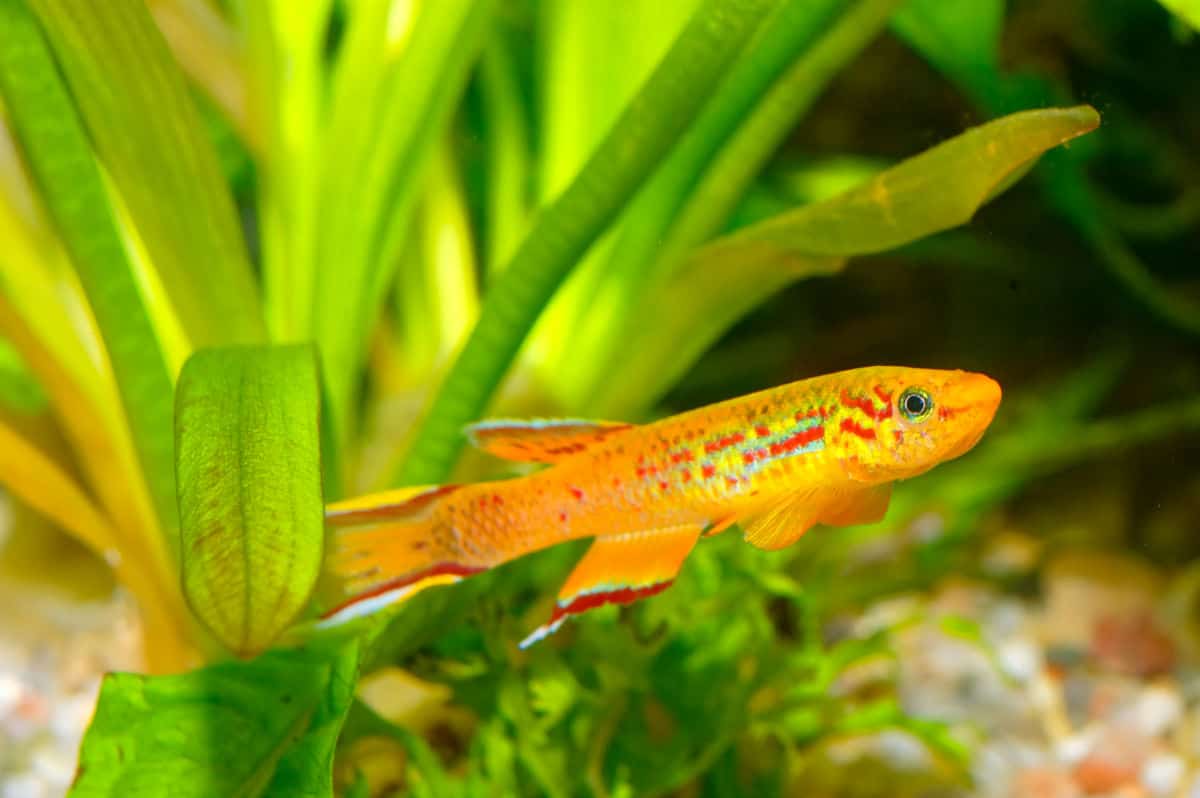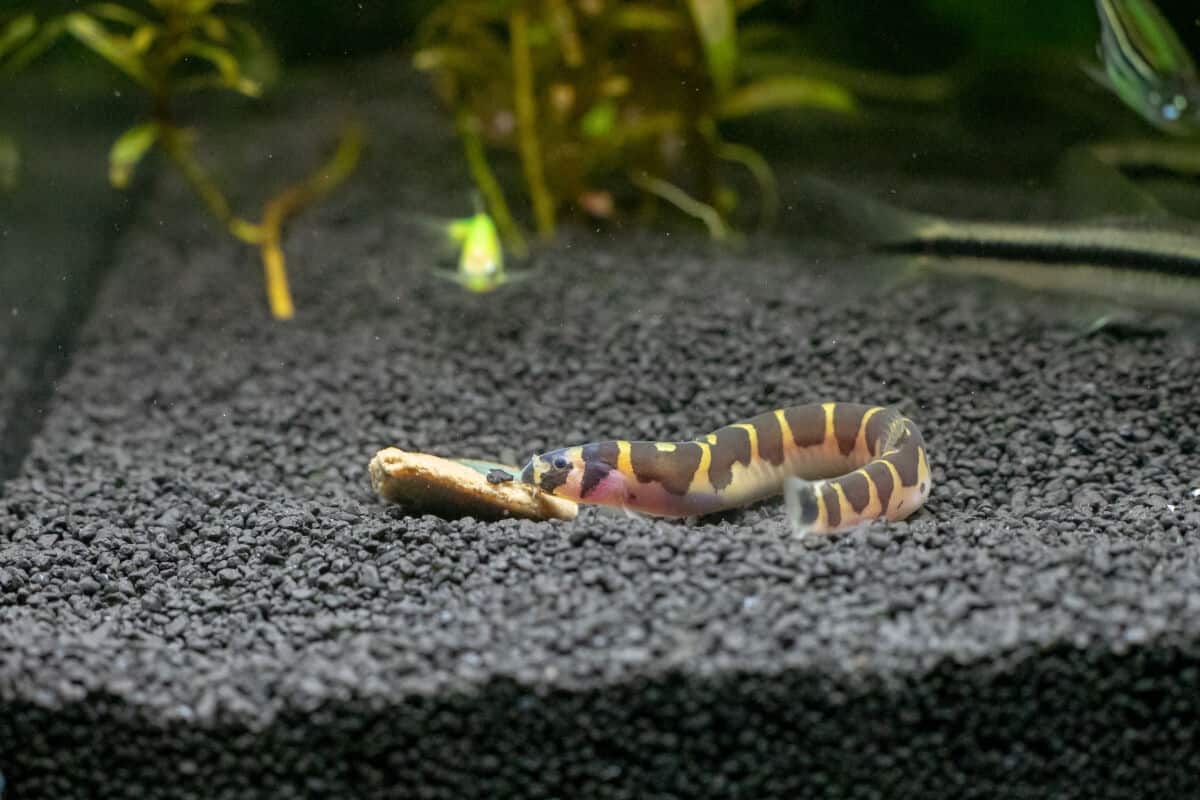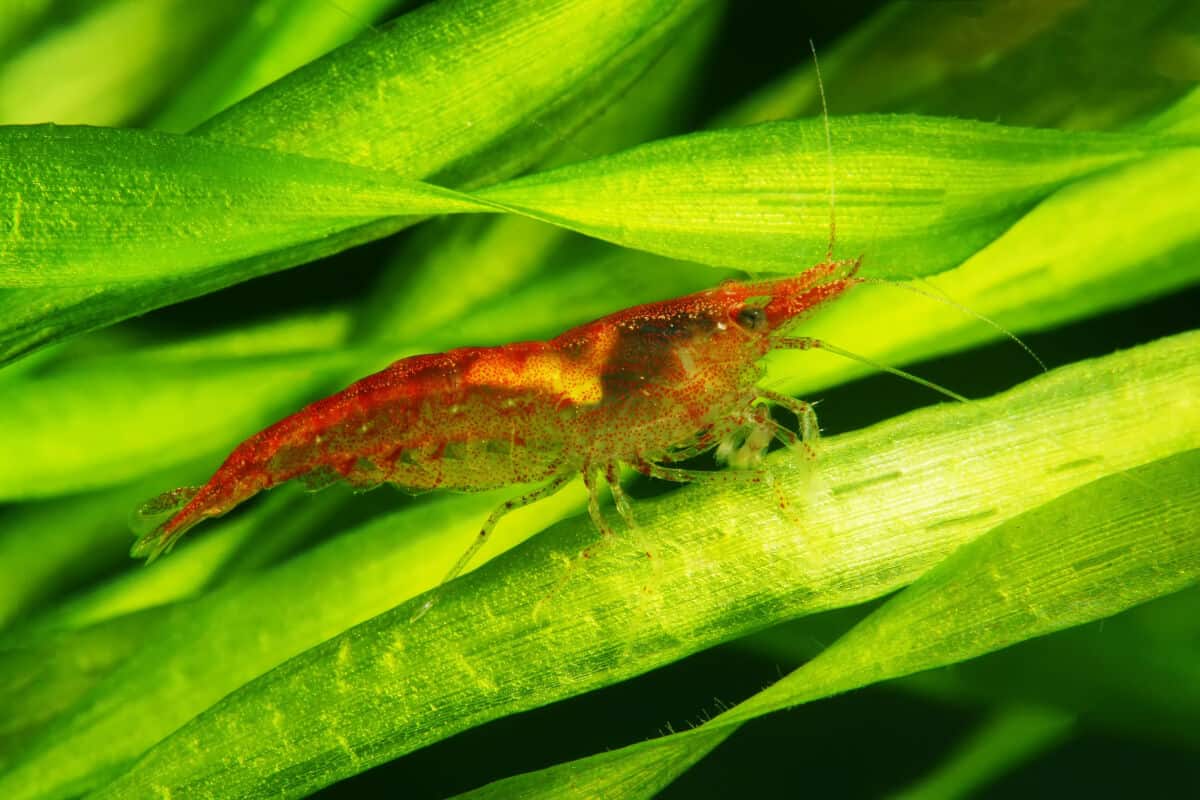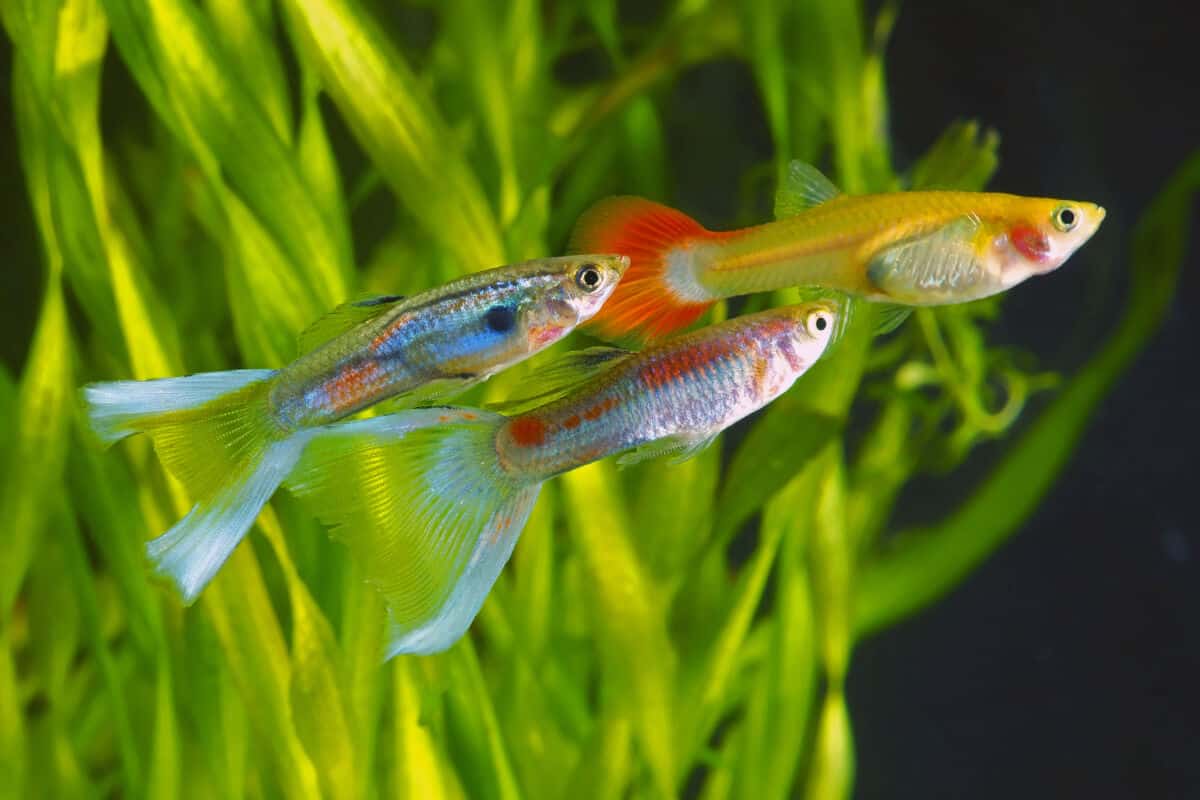Killifish are an excellent, rewarding species of aquarium fish keepers of intermediate experience.
In the wild, killifish are found all over the world, except for Australia and Antarctica. In fact, they are so prolific there are over a thousand different types of this popular fish available, in many different colors.
In this article, we will shed light on their characteristics, variance of appearance, how to feed and breed them as well as share some facts and statistics about them.
We will go into great detail on killifish care and the best way to look after this favorite fish.
So let’s get started with a rundown of the most important things to know.
A Brief Overview and Some Statistics
In the below table you’ll find the most important characteristics and statistics when looking at the killifish breed profile.
Also offered is an at-a-glance look at their care needs, tank setup and more.
| Characteristic | Details |
|---|---|
| Common name(s): | Golden wonder panchax, blue panchax, golden panchax, golden wonder killifish, golden wonder, sparkling panchax, striped green panchax, killifish, striped panchax, striped aplocheilus, green panchax killi |
| Scientific Name(s): | Aplocheilus lineatus |
| Additional Scientific Names: | Aplocheilus vittatus, Panchax lineatum, Aplocheilus affinis, Haplochilus lineatus, Panchax lineatus, |
| Family: | Aplocheilidae |
| Origin: | Native to East Africa |
| Care Level: | Easy-moderate, but some experience with caring for fish is required |
| Temperament: | Usually peaceful but can be aggressive at times |
| Adult Size: | 2–4 inches. Some species like the Blue Gularis can grow to 6 inches |
| Color Form: | Many colors—often blue, orange, yellow, green and red combinations with gold and brown |
| Lifespan: | Most types are annual fish. Some may live for around 3 years in correct conditions |
| Minimum Tank Size: | 20 gallons |
| Typical Tank Setup: | Oxygenated heavily planted water with floating plants to hide in |
| Tank Level: | Top level |
| Diet: | Carnivorous |
| Water Conditions: | Freshwater and brackish water, 72–75° F, KH 3–8, pH 6.0–7.5 |
| Tank mates / Compatibility: | Peaceful and docile and so are compatible with many other similar sized fish such as gobies. Some experts recommend keeping them alone in tanks |
The above table highlights how this species are generally a peaceful fish, apt to bring color and activity to any home aquarium.
They come in the beautifully coordinated base colors of brown, olive green and yellow gold. They can survive in various water variables, and in the wild are found in both fresh and brackish waters.
There are over 1250 different types of killifish. Due to their character, appearance, and ease of care and breeding, they are popular in home aquariums.
Appearance: What do Killifish Look Like?
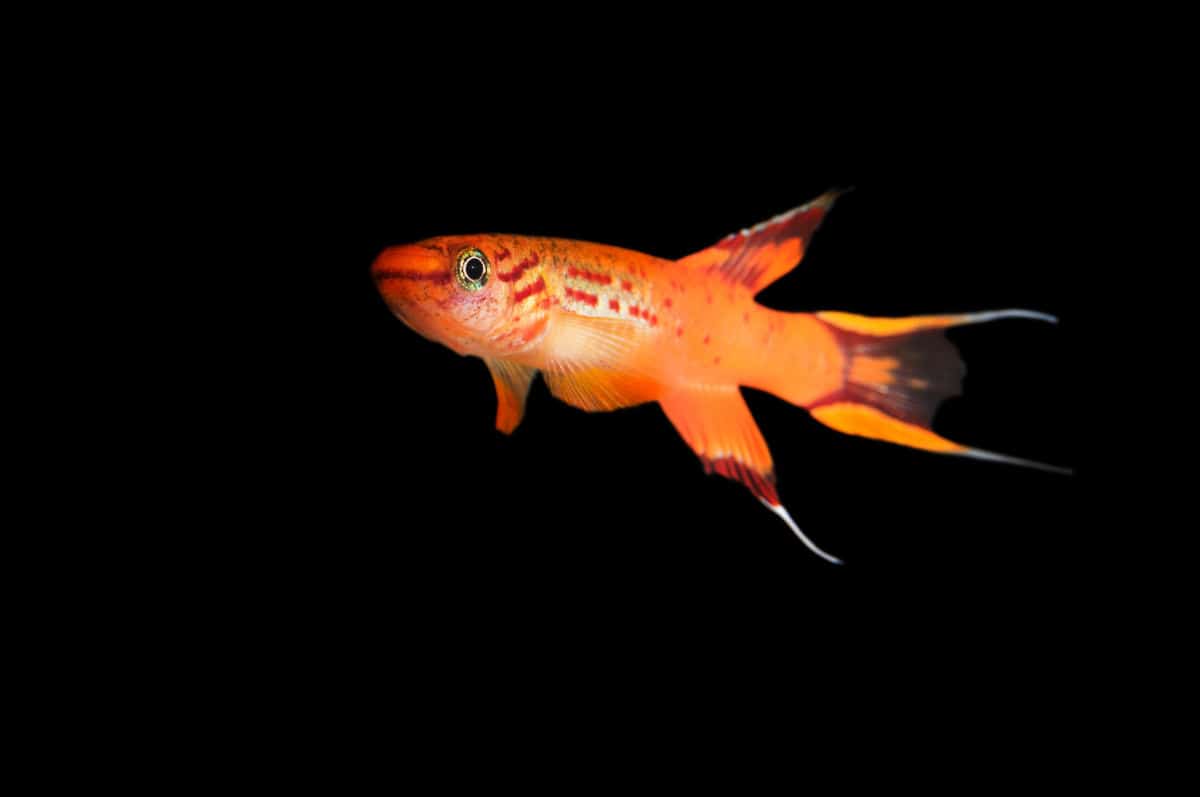
There are many variables and differing descriptions of the killifish since there are so many different types.
The general description is they are thin and long, and have a brown or bronze back. They have an upturned snout, and the flanks can be bronze or dark green in color. Alternate scales are an attractive gold, which is why some are known as “golden wonder.”
The belly, as well as the jaw, is white in color, and the eyes may be green. They are slender and pike-shaped, which makes them excellent swimmers.
Males are brightly colored. Their bodies are yellow and blue, and they have bright orange spots and stripes. Females aren’t as colorful and tend to be more subdued in appearance, with brownish-gold bodies and fewer flecks of color.
In particular, the Golden Wonder Killifish is striking in appearance. There are also many other variations that have differing tail fins. For example, the guentheri killifish has an all-red tail, and the blue lyretail has a recognizable red and white tail.
Killifish are, for the most part, a fairly small fish. On average, they measure around 2 inches. The largest species will just about reach 6 inches.
How do They Behave?
They are a docile species. They adapt well to variables in water conditions and are not very sensitive to their neighbors.
They will usually leave other fish alone unless they’re very small, in which case they may be seen as food. They can, however, become aggressive to other top-dwelling fish. Aggression will include darting about and nipping at their sides.
It is important to note that adults can become aggressive among themselves. Therefore, if you are new to fish keeping or killifish care, it’s best that you start with a single male or breeding pair in your aquarium on their own.
As you become more experienced, you may keep a single male with two or three females, or any number of females all together. Just make sure that you are allowing enough space and hiding places, so that your new friends can take some personal time should they wish.
What are the Ideal Habitat and Tank Conditions?
The ideal habitat is the warm and humid environment of African countries. It’s commonly found in countries such as Kenya, Tanzania, and Mozambique.
They can survive and thrive in a wide variety of natural environments across the world. They can be found in deep rainforest swamps and ponds, as well as seasonal puddles on the Savannah plains.
What Size Tank do They Need?
A minimum aquarium of 10 gallons (37.8 liters) is required for every three fish. Some types of killifish can survive and breed in shallow tanks but like to have open spaces for swimming.
Ensure that your tank has a secure lid with no gaps, even small ones—they are well known for their leaping abilities!
Water Type and Parameters
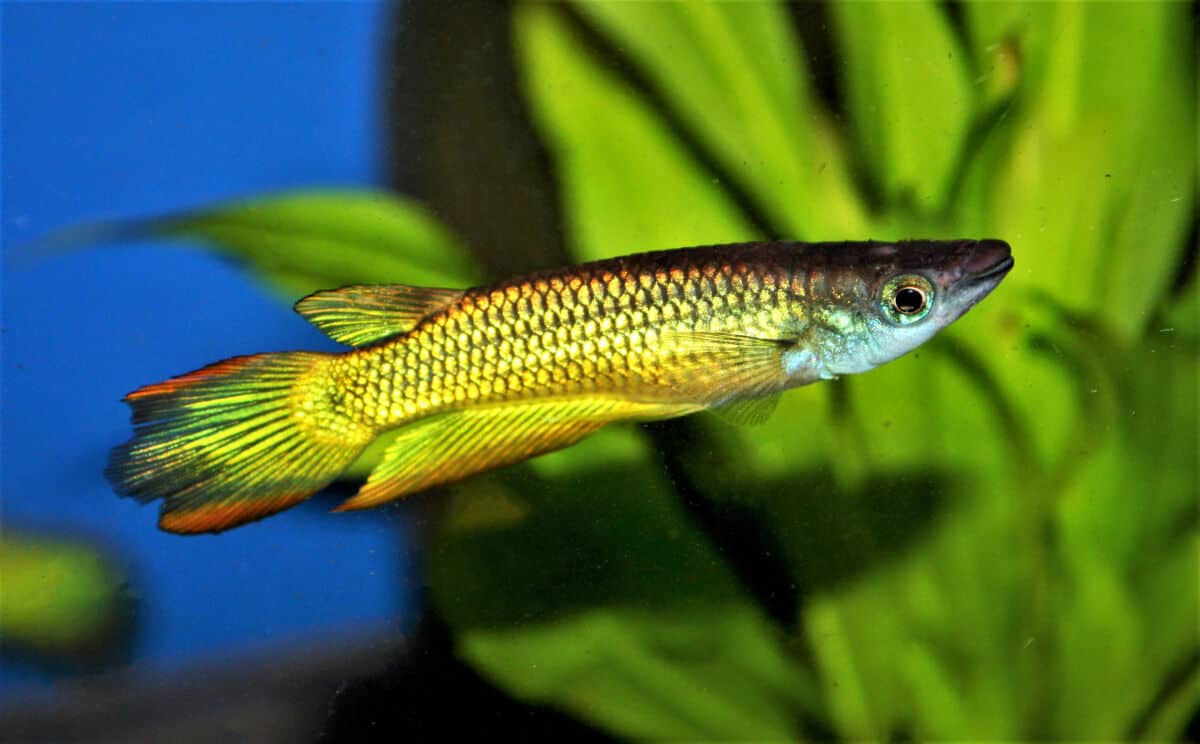
Most types prefer soft, fresh water, with a pH of 6.0 to 6.5 and a water temperature of 70 to 80 degrees Fahrenheit. Although, this can vary, depending on the species you are keeping.
It is also recommended to keep a thermometer on the opposite side of the aquarium to the heater, to ensure the whole tank is heated consistently to the right temperature.
They prefer low or no movement in the water.
What Substrate Should You Use?
To encourage breeding, use peat for substrate. When they breed, they will bury their eggs in it. They do this by diving into the peat.
If you do use peat, be sure to keep a close eye on the water’s pH level. If the level drops below a pH of 7, the peat can increase the acidity, which could be harmful to your killies, so you will then have to raise the pH with one of the methods here.
The floor can also be kept bare if breeding is not a concern. However, this isn’t very aesthetically appealing. Dark gravel will work well, but again, be sure this is a type of gravel that won’t harden the water.
Filtration Requirements
Killies will manage well with in-tank filtration. A good level of water filtration helps maintain a suitable chemical balance in the water, making sure ammonia and nitrates are under control.
An appropriate filter for a small tank is a box filter with a filter sponge. Killifish don’t like currents, so keep the water flow as low as you can, which means avoiding powerful canister filters and powerheads.
Lighting Requirements
Lighting should be kept to a minimum. This replicates the swampy environments and forest streams of the wild that provide little exposure to sunlight. If the tank or room is brightly lit, offer plants and hiding areas for shade.
Plants, Decorations, Swims, And Open Spaces
They like open spaces in which to swim. They also like decorations, including live plants and rocks. Suitable plants are cryptocorynes—they use these to hide in and seek shelter when needed.
The females, in particular, like to hide while being chased by males. This would replicate the wild and create an ideal habitat for these fish that promotes natural behaviors.
How Many Killifish Can You Have Per Gallon?
Each fish needs an approximate three gallons. Thus a minimum tank size of 10 gallons can have three killifish. Some types can live and breed in very shallow water, but you should check the requirements of the individual species in your care.
A breeding pair should be kept in a minimum 20-gallon tank. It is advised not to keep more than one male in a tank smaller than this, due to potentially territorial behavior.
Diet and Feeding
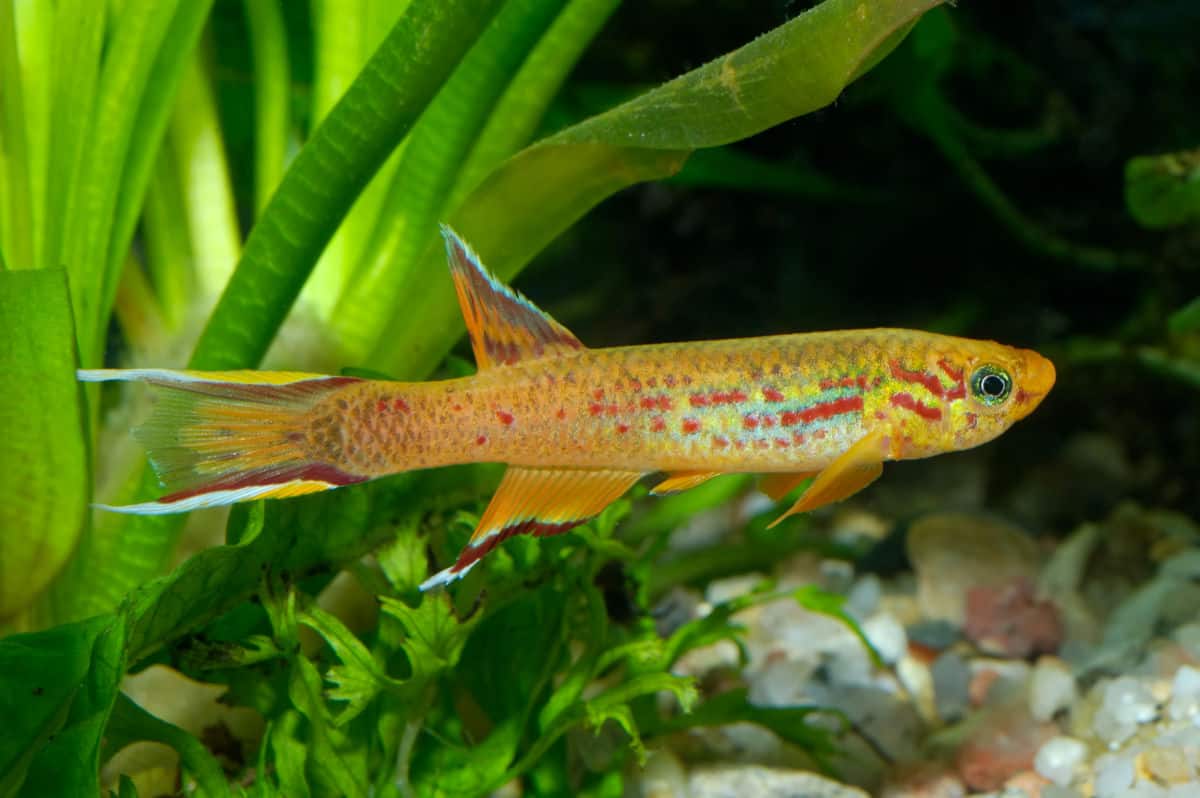
Most killifish are carnivorous, and it is fairly easy to meet their dietary requirements. Be prepared to provide live food and a balanced and varied diet to keep them healthy.
What They Eat in the Wild
They typically eat crustaceans, insect larvae, mosquito larvae, and worms in their natural habitat. Some types, however, are omnivores and do also consume algae.
What You Can Feed Them at Home
They will eat the majority of live foods such as white worms, brine shrimp, tubifex. They will also accept some dried flakes and freeze-dried foods.
Giving them a varied diet will ensure their optimal health and the best chances of prolonged survival. It will also have a positive effect on their appearance and activity levels.
What Human Foods Can They Eat?
They will readily consume blanched chopped zucchini and ground shrimp. All types of cooked veggies will be fine, so long as they are softened. It is best to mix these with flaked and freeze-dried foods for a varied diet.
How Often do They Feed?
It is best to feed them once or twice a day. If feeding twice a day, leave around 12 hours between feeds.
Special Care Requirements
These are generally a hardy species and will do well if kept in the right conditions. They can be prone to “velvet disease,” which is caused by a free-swimming parasite in the tank.
The symptoms are easy to spot. The gills become inflamed, and the affected fish will often rub themselves against objects in the tank. There is also a yellowish colored film on the skin.
Should you suspect velvet disease, the best way to treat is as follows:
- Lower the light levels in the tank for a few days.
- Increase the water temperature to around 82 degrees Fahrenheit.
- Add aquarium salt to the water.
- Use copper sulfate treatments for up to 10 days.
- If you use a carbon filtration system, turn it off during this time.
Compatibility of Killifish With Other Fish
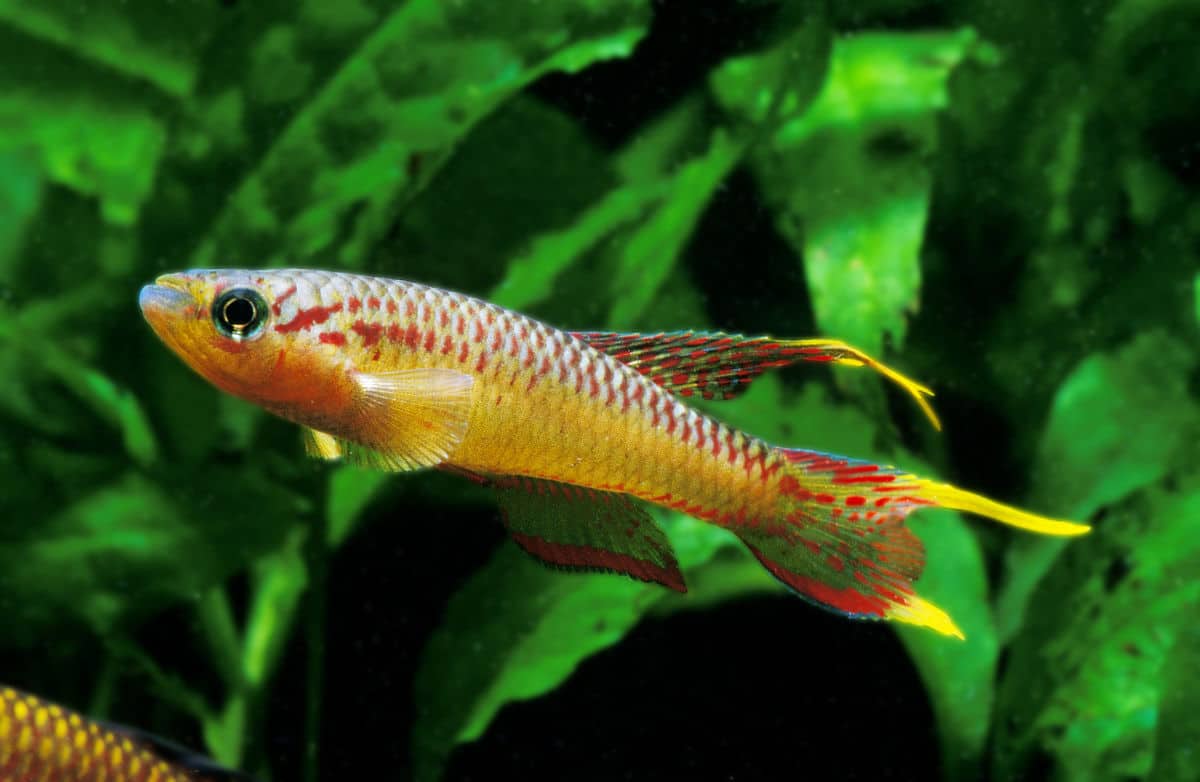
They are largely peaceful. They will dwell in tanks with other freshwater or brackish water fish.
They are an ideal tank mate to keep with gobies. It’s not recommended to keep them with other smaller fish like neon tetras, as they could be seen as food.
They may also become aggressive towards other top dwelling fish, so it is important to select tankmates which use other water levels.
Despite the above, some experts recommend keeping them in their own tank.
Can You Keep Multiple Killifish Together?
They are a vibrant and colorful addition to any community aquarium.
Regardless of this, you may want to keep only one male, although any number of females can be kept together. This is because adult males can become aggressive toward each other. They generally prefer to live in small groups.
Males tend to swim around the females, chasing them to spawn, and the females will hide away between plants and rocks.
Purchasing Advice
Like most aquarium fish, you can purchase different types of killifish easily from local pet stores. Individual stores may, however, only have one or two types of killifish for sale.
You can also buy them online, through many websites. Most people do, in fact, purchase theirs online.
Some types of killifish eggs can be dried and later hatched, and so these eggs can be easily posted in the mail.
Make sure you select healthy looking fish without any discolored patches or ragged fins. Also, since there are many types of killifish, they can be misidentified, so you must ensure you know which type you are purchasing.
Breeding
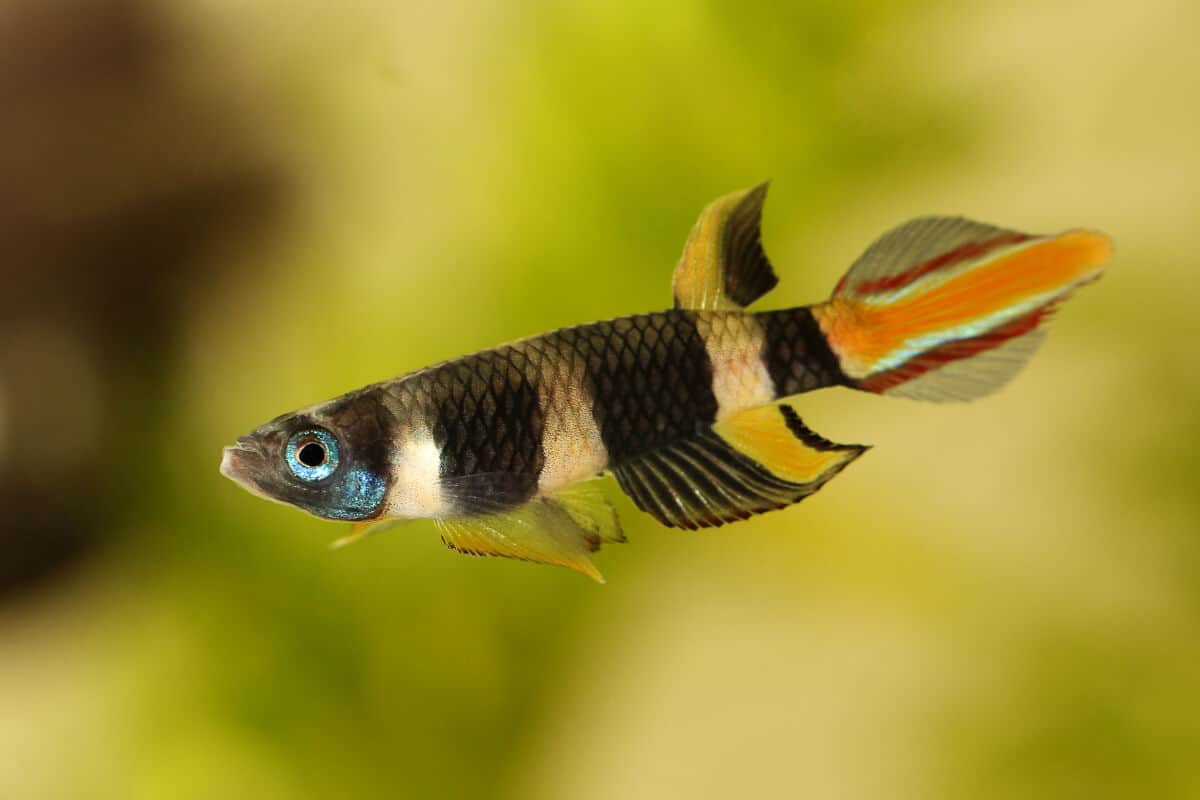
Some types are known as “annual fish.” This is because in the wild, they are usually found in temporary pools created by rainwater. They die when the pools dry up, but they do so after burying their eggs in the mud of the river or pond beds.
The eggs develop during the dry season and hatch when the rainy season returns. This means that there are always killifish to be found whenever it rains! The new fish reach maturity quickly, and lay their own eggs, continuing the cycle.
In home aquariums, it is encouraged to use peat substrate. This replicates the mud found in the wild. The male and female dive into the peat. The male presses the female into the peat, causing the eggs and sperm to release.
The peat should be taken out and left to dry in damp conditions. It should then be placed in an airtight container and left for around three months. This replicates the “drought” season, that would normally happen in the wild.
For non-annual killifish care, the eggs don’t require removal from the water once they have spawned. They like to lay their eggs in a spawning mop, and eggs will hatch within two weeks.
As soon as the eggs have hatched, relocate the fry (baby fish) into a smaller holding tank so that they can be kept away from the adults. They can be fed live foods, most commonly baby brine shrimp.
Interesting Facts and Trivia
Here are some interesting facts and trivia about killifish, to help you expand in your general knowledge!
- The name “killifish” comes from the word “killy”. This is derived from the Dutch term for pond or lake. You can be forgiven for assuming that it has anything to do with “kill” and the carnivorous diet of this fish!
- They are known jumpers, so you will need a tight lid for your tank.
- Similar to other fish, like the guppy, they can be used to fight malaria. This is because it feeds on mosquito algae.
- Their eggs can be mailed to you after drying, they can be rehydrated and hatched at home.
- The Orestias (Orestias cuvieri) Killifish can grow up to a whopping 10.5 inches.
Summary
Killifish come in over a thousand different types. They are a popular home aquarium fish and are carnivorous. They come in several colors and can bring vibrancy to any tank. The males are more brightly colored than the females.
They are generally peaceful and can live harmoniously with other species of a similar size. However, since they like more acidic water, it is important to select fish that will be happy and healthy in similar water conditions. A minimum aquarium of 10 gallons is required for every three fish.
Overall, they are an excellent choice for intermediate fish keepers. Their care is relatively easy, and these brightly colored fish will undoubtedly bring a lot of character, color, and activity to your home aquarium.
Do you have experience keeping killifish? If so, let us know! Drop us a line or a comment with any tips, tricks or anecdotes about your experience with them—let’s help each other!

